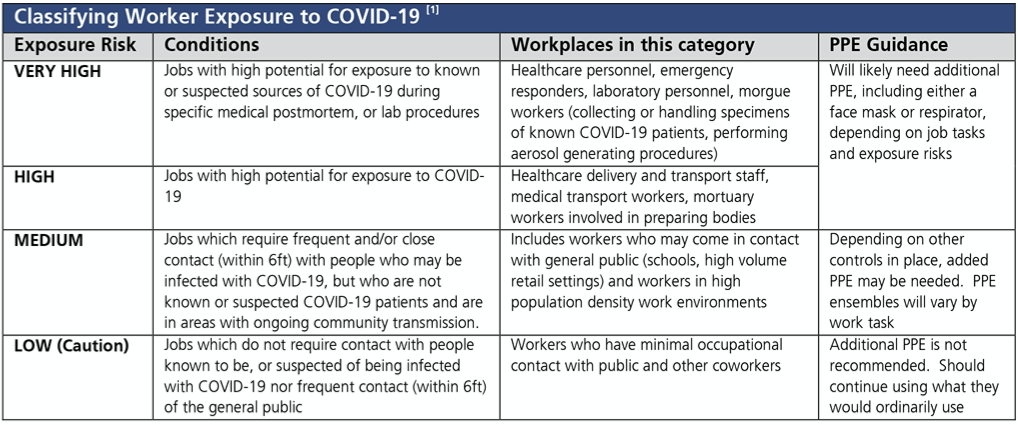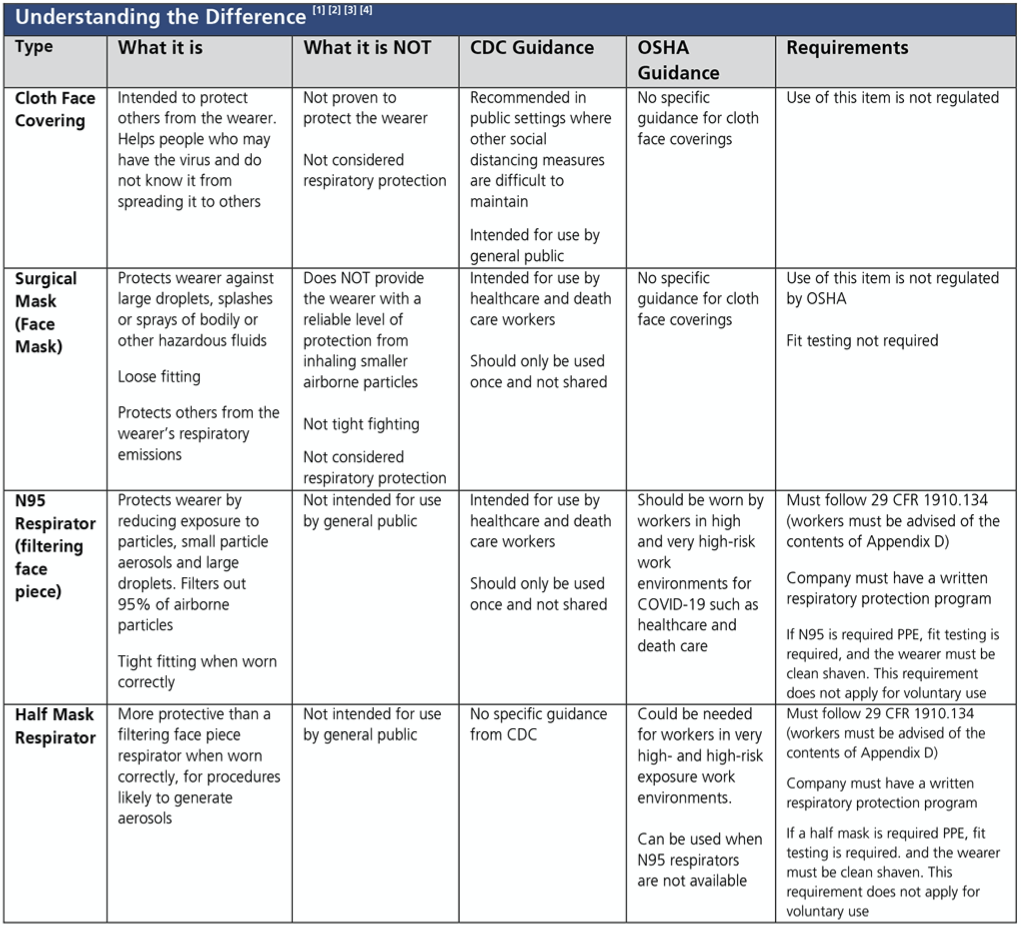After engineering and administrative controls have been implemented and/or considered, there still may be a need to consider additional controls such as PPE. When considering the use of face coverings, face masks, or respirators it is important to understand the differences, well as requirements related to their use.
Face Coverings, Face Masks, and Respiratory Protection for COVID-19
Face Coverings, Face Masks, and Respiratory Protection for COVID-19
by World Wide Specialty Programs, Inc.
Establishing appropriate workplace controls to minimize the spread of COVID-19 is critical as employees return to the workplace. While engineering controls and administrative controls should be the first consideration, PPE may be necessary.
Introduction
Preventing and/or mitigating the spread of COVID-19 amongst the workforce will rely in part on employer plans for intervention. While engineering and administrative controls are considered to be more effective for minimizing the exposure to COVID-19, Personal Protective Equipment (PPE) may also be necessary when those controls are not viable. Although correctly used and proper fitting PPE can help prevent certain exposures, it should not supersede other prevention strategies.1
Discussion
When deciding if employees will be required to wear face coverings, face masks, or respiratory protection, it is important to ensure engineering and administrative controls have been considered. During an outbreak such as COVID-19, recommendations for PPE and other protective measures specific to job tasks may change depending on the impact of COVID-19 in your geographical area, updates to risk assessments, and information on PPE effectiveness. Community-based factors will influence strategies that may change as things evolve.1 When determining PPE requirements, including whether face coverings, face masks, and/or respiratory protection is necessary, remember employees must be trained on how to correctly use the PPE and PPE must be:
- Selected based upon exposures to the worker
- Properly fitted, and refitted as applicable (i.e. Respirators)
- Consistently and correctly worn when required
- Properly maintained, replaced, disposed of1
Guidance
Guidance may vary based on the level of exposure of each workplace via community spread, the number of cases of COVID-19 in the workplace, and/or the exposure level employees face in regard to COVID-19.1
To properly understand if face coverings, face masks, or respiratory protection are necessary in your workplace it is important to understand the exposure risk level (as defined by OSHA) employees face. Most non-healthcare environments will fall under the medium or low exposure risk level.
Conclusion
PPE is just one element of effectively protecting workers from an exposure. When making decisions about whether face coverings, facemasks, or respirators are necessary in the workplace many factors must be considered. Remember engineering and administrative controls should always be considered before resorting to PPE; PPE is the last line of defense. It is important you make a decision based on facts appropriate to your work environment and situation.
References
1. Occupational Health and Safety Administration (OSHA). Guidance on Preparing Workplaces for COVD-19 OSHA 3990-03. (2020).
2. Centers for Disease Control and Prevention. Use of Cloth Face Coverings to Help Slow the Spread of COVID-19 (2020).
3. Food and Drug Administration. N95 Respirators and Surgical Masks (Face Masks) (2020).
4. Centers for Disease Control and Prevention. Understanding the Difference (2020)



